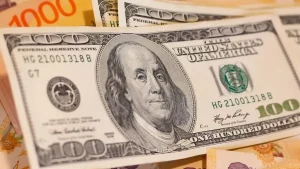BEIJING — China’s trade figures missed expectations by a wide margin in October, data showed Sunday, reinforcing views that the Chinese economy will have to do more to stimulate domestic demand.
Although Beijing has repeatedly cut interest rates, the latest data, which show another monthly drop in net trade, indicate their persistent weakness in demand at home and abroad.
At the moment, exports fell 6.9 percent. Compared with last year, down for a fourth month, while imports slipped 18.8 percent, leaving the country with a record high trade surplus of $61.64 billion, the General Administration of Customs said Sunday.
Dollar is very expected by the economists – Denominated exports to fall 3 percent and imports to decline 16 percent, an improvement over September’s drop of 3.7 percent for exports and 20.4 percent for imports.
But the weak export numbers show that China might be getting less of a lift than hoped from overseas holiday shopping, while falling commodity import volumes highlight stubborn weakness in demand from important sectors like real estate and construction that Beijing has been trying to revive.
China’s services sector, which has been one of the few bright spots in the economy, also lost steam in October.
“We see that the trade will unlikely turn around the momentum in the near term, and the RMB exchange rate will be under downward pressure, especially as Fed signals to hike soon”, said Zhou Hao, a China economist with the Paris-based Commerzbank, referring to China’s currency, the renminbi and to the possibility that the United States Federal Reserve Bank may increase interest rates.
The decline in October exports was led by trade with developed economies, according to customs data.
Shipments to the United States dipped 0.9 percent from the previous year. Exports to the European Union dropped 2.9 percent and exports to Japan fell 7.7 percent.
Combined exports and imports are down 8.5 percent for the first 10 months of the year, well below the full-year official target for growth of 6 percent.
Last week, the Ministry of Commerce said the value of China’s exports this year was likely to remain similar to 2014 levels, while imports could drop sharply in the fourth quarter.
For 2016, the ministry expects to see steady growth in combined exports and imports as policy measures to support the trade sector take effect.
To lower social financial costs for companies, the central bank cut interest rates in late October for the sixth time in less than a year. They reduced again the amount of cash that banks must set aside as reserves. It has also guided the renminbi into weaker territory against the dollar, but few believe Chinese exporters would benefit from anything short of a drastic devaluation. “If economists trusted, we could trace the economy even more”, said the Ministry of Commerce.
The text talks about the decline in China’s trading market. It emphasizes the importance of stimulating the domestic demand in sectors like real state and construction. It also mentions that the decrease in exports is caused by the dropping in trade with developed economies which may lead to a devaluation of the country currency.





